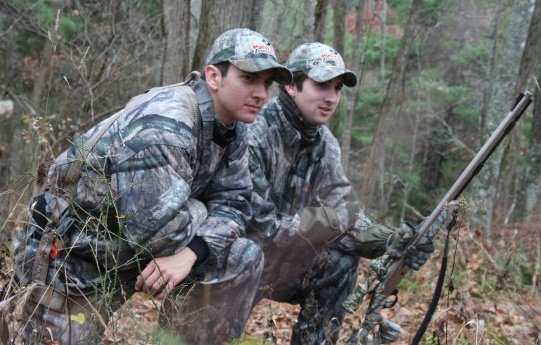While spring would seem to create an instant liberation from dietary struggle, this is not the case as although food may be more plentiful, there has been another stress added to both the bucks and does of the herd. In late March or early April photoperiodism triggers an increase in gonadotrophic hormones through the pineal gland in bucks. Simply, antler velvet begins to grow as the antlers begin to develop. The does, on the other hand, are dealing with the stress of eating for two as they are entering into the final trimester of their pregnancy.
late March or early April photoperiodism triggers an increase in gonadotrophic hormones through the pineal gland in bucks. Simply, antler velvet begins to grow as the antlers begin to develop. The does, on the other hand, are dealing with the stress of eating for two as they are entering into the final trimester of their pregnancy.
Social lives and feeding patterns are affected the greatest during the spring time. Bucks and doe split apart and each group establishes its own fraternal/maternal hierarchy. Bucks congregate into groups of 4 to 5 where a variety of age classes are represented due to the fact that bucks of many age classes have been harvested during hunting season. Does congregate into larger groups that usually consist of the dominant doe, her daughters, and their offspring. Why do deer congregate into these groups? Simply, protection. As the grass, clover and other vegetation begins to grow, deer are drawn into more open areas where there is less protection and cover from brush and trees. An increased number of eyes and noses creates a situation in which a predator is more likely to be spotted. Even an areas most dominant buck will shun the solitary life for the comfort and safety of the group.
In addition to their protective groups, deer are also reduce their susceptibility to predation through their ability to gather and store food very quickly due to their compartmentalized stomachs. Deer’s stomachs have four compartments, the first of which, the rumen, is used solely as a storage compartment. The compartmentalization creates for quick harvesting and storage which greatly decreases the amount of time that is spent out in the open. While not as vital in our neck of the woods, these aspects of a deer’s biology are crucial on the plains of the west and brush country in
Granted there are biological differences between the behavioral characteristics of bucks and does. However, in general, congregating into sex-specific groups and increased food availability are the two underlying themes for both bucks and does. While it may not seem too “exciting” and it may seem irrelevant to the hunting experience, it is these months that are perhaps the most critical in the production of bigger bucks and healthier deer. How you may ask? Stay tuned….




No comments:
Post a Comment